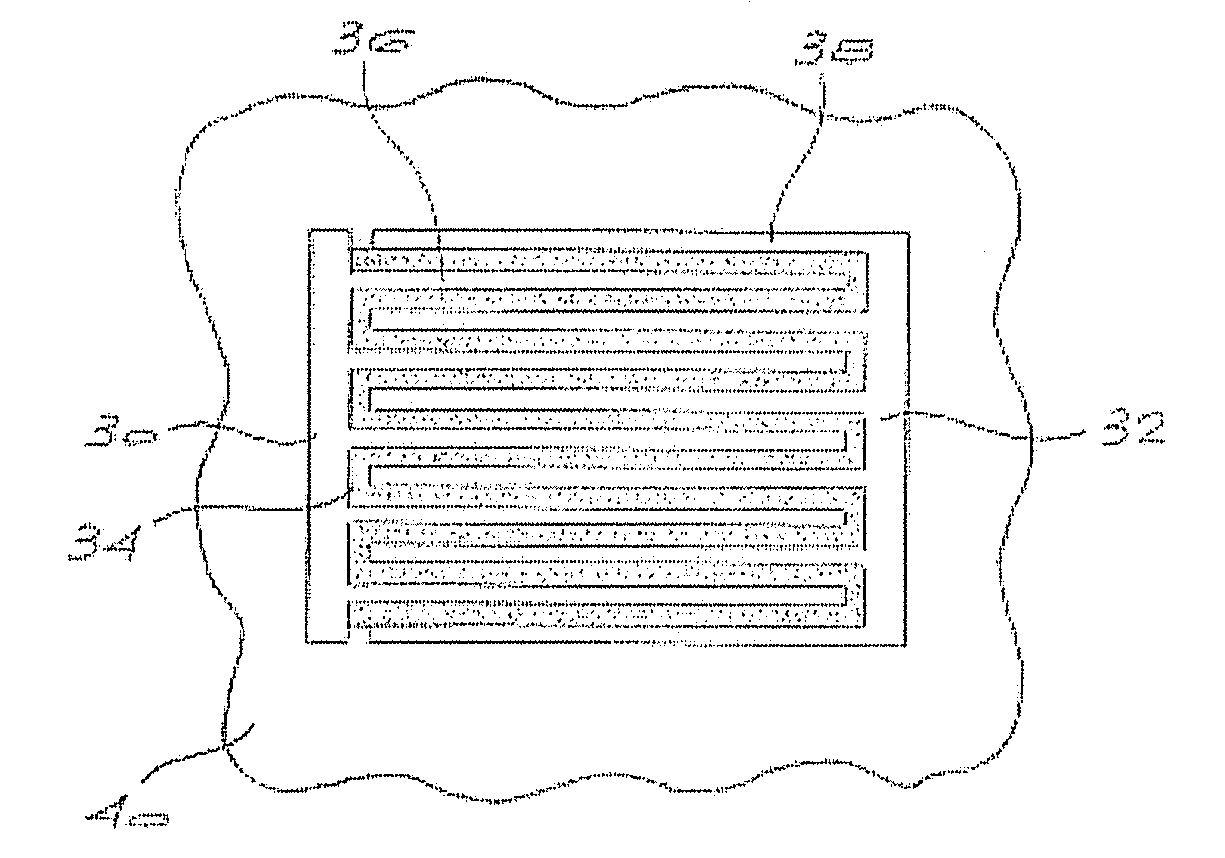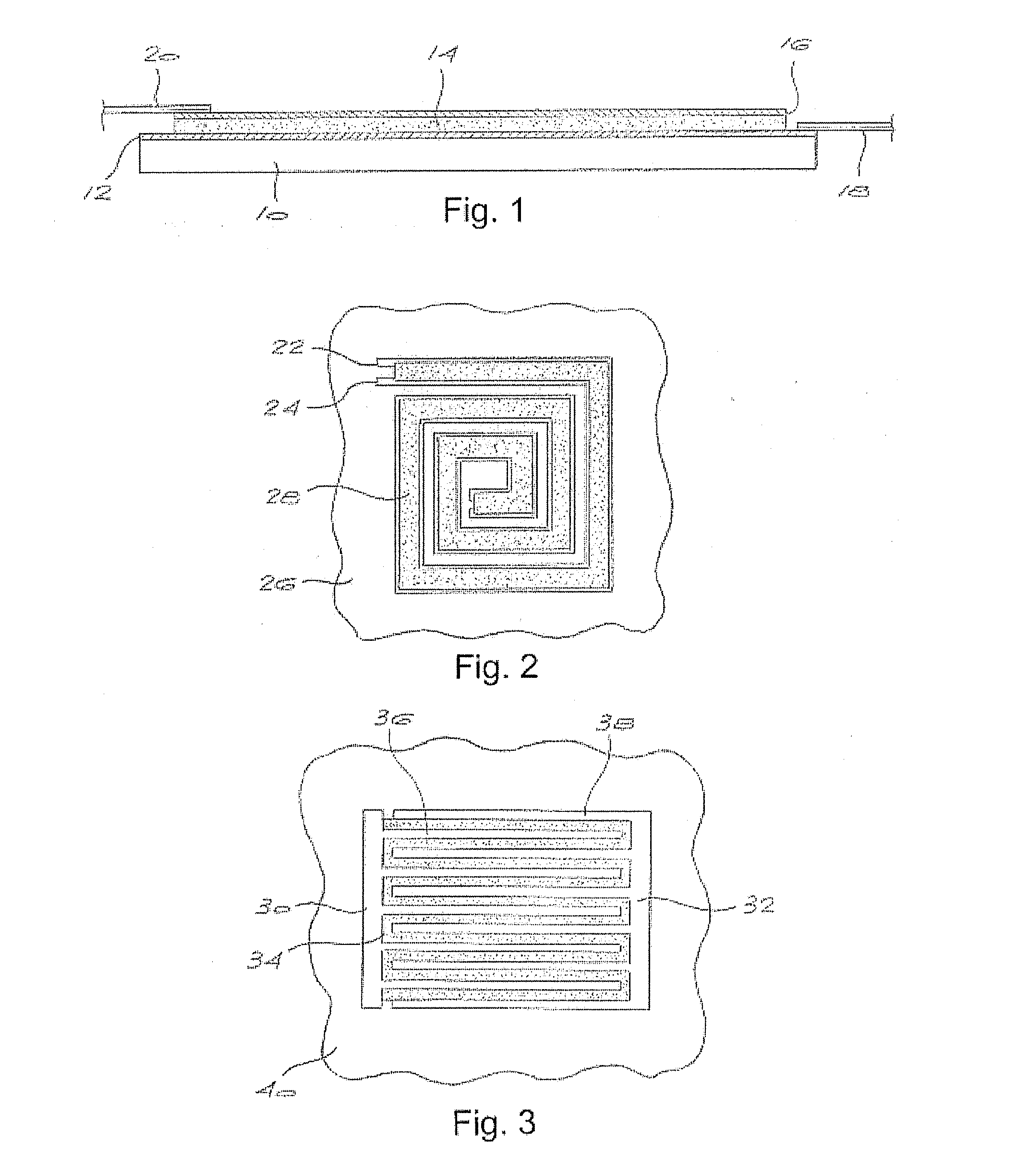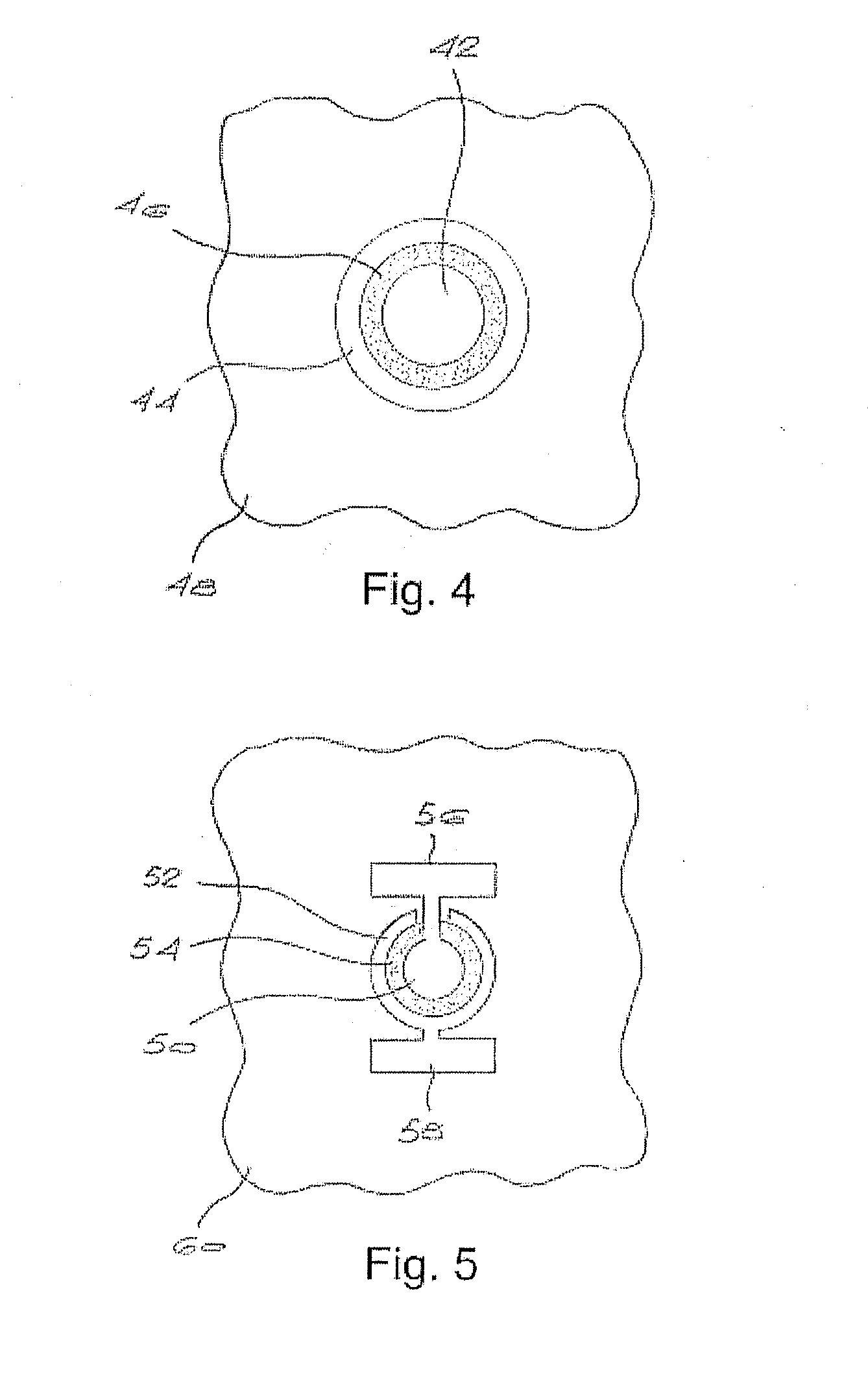Printed Temperature Sensor
a temperature sensor and printed technology, applied in thermoelectric device manufacture/treatment, instruments, heat measurement, etc., can solve the problems of not being compliant with modern legislation, limiting the use of substrate materials, so as to achieve low aspect ratio of thermistor devices and high resistivity of printed silicon materials.
- Summary
- Abstract
- Description
- Claims
- Application Information
AI Technical Summary
Benefits of technology
Problems solved by technology
Method used
Image
Examples
example 1
[0090]In a first example a negative temperature coefficient thermistor was produced according to the design shown in FIG. 6. Four silver electrodes or contacts were deposited on 80 g / m2 wood-free paper sheet substrate by screen-printing using Du Pont 5000 silver conductor. The separation between any two adjacent electrodes was 2 mm. After allowing the silver ink to dry for approximately one day under ambient conditions, silicon ink was drop-cast to form a connection between all four electrodes of the device. The silicon nanoparticles used in the ink were milled from a boron doped p-type silicon wafer, according to the method disclosed in WO 2009 / 125370. These particles were mixed with a commercially available acrylic screen-printing base in a ratio of 95% silicon by weight, and the consistency of the ink was adjusted by thinning with propylene glycol.
[0091]The completed device was cut out from the larger sheet of paper to form a small flexible device of size approximately 15 mm by 1...
example 2
[0094]In a second example a negative temperature coefficient thermistor was produced, also according to the design shown in FIG. 5. Silver contacts were deposited on a substrate comprising a sheet of 80 g / m2 wood-free paper by screen-printing using Du Pont 5000 silver conductor. The diameter of the inner electrode was 5 mm, and the separation between the two electrodes was 0.5 mm. After allowing the silver ink to dry for approximately one day under ambient conditions, a silicon layer was screen-printed over the gap between the electrodes, using silicon nanoparticles milled from 2503 grade metallurgical silicon according to the method disclosed in WO 2009 / 125370. These nanoparticles were mixed with a commercially available acrylic screen-printing base in a ratio of 88% silicon by weight, and the consistency of the ink was adjusted by thinning with propylene glycol.
[0095]The completed device was cut out from the larger sheet of paper to form a small flexible device of size approximate...
example 3
[0096]FIG. 11 is a photograph of a negative temperature coefficient thermistor according to the design shown in FIG. 3. In this case the silicon is printed as a solid block over the interdigitated silver contacts, but only the area of silicon deposited between the contacts contributes to the temperature dependent resistance. For a low resistance, the length to width aspect ratio of the silicon semiconductor should be low, ideally less than 1 / 1 000. In this example, the silver contacts comprise 25 individual electrodes, with 24 gaps between adjacent electrodes, each gap having a length of 16 mm and the width of each gap (the separation between adjacent electrodes) of 0.25 mm.
[0097]In contrast to the device of Example 2, which is a high resistance device and has a length to width aspect ratio of approximately 1 / 30 (given by the ratio of the transverse gap between the conductors to the circumference of a circle defining the gap between the conductors in FIG. 5), the design of the prese...
PUM
| Property | Measurement | Unit |
|---|---|---|
| size | aaaaa | aaaaa |
| size | aaaaa | aaaaa |
| size | aaaaa | aaaaa |
Abstract
Description
Claims
Application Information
 Login to View More
Login to View More - R&D
- Intellectual Property
- Life Sciences
- Materials
- Tech Scout
- Unparalleled Data Quality
- Higher Quality Content
- 60% Fewer Hallucinations
Browse by: Latest US Patents, China's latest patents, Technical Efficacy Thesaurus, Application Domain, Technology Topic, Popular Technical Reports.
© 2025 PatSnap. All rights reserved.Legal|Privacy policy|Modern Slavery Act Transparency Statement|Sitemap|About US| Contact US: help@patsnap.com



